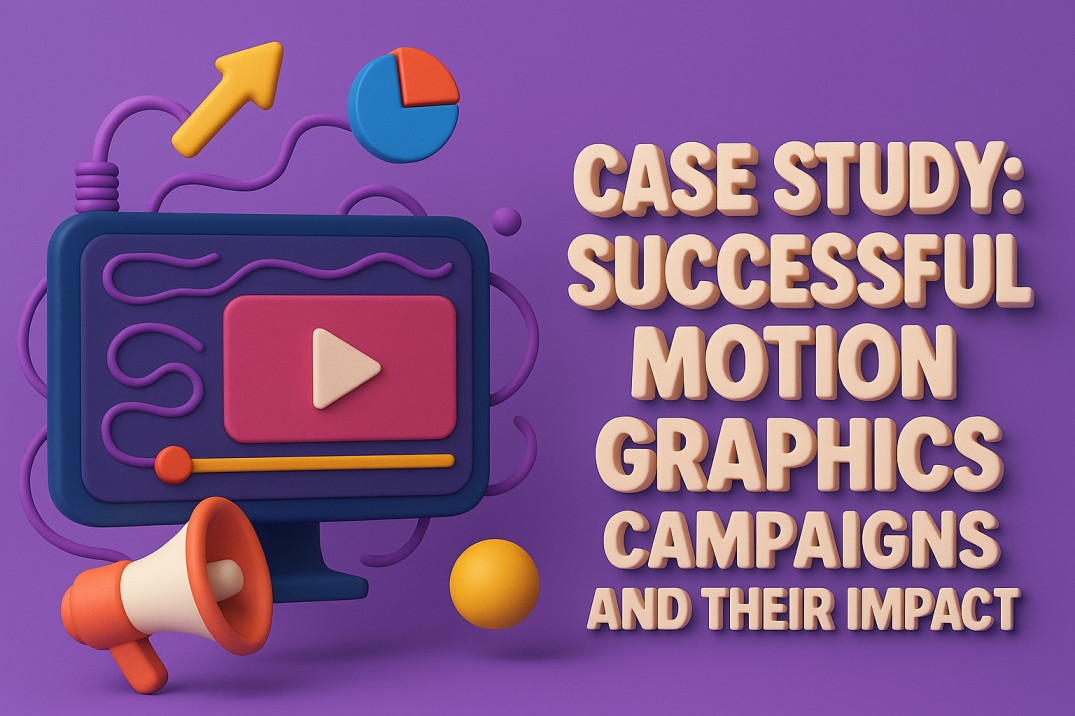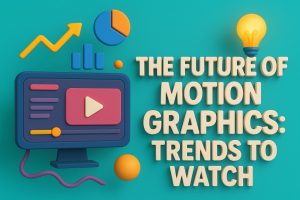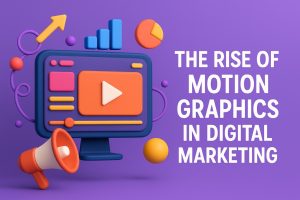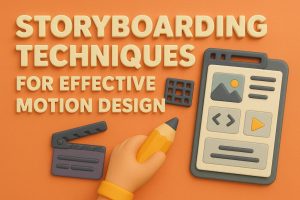Why Motion Graphics Are Owning the Spotlight? Let’s face it—in a world where people scroll faster than they blink, brands need to stand out fast. For this reason, motion graphics campaigns are taking center stage. In fact, they’re eye-catching, dynamic, and can tell a story in seconds. For example, from social media to websites and digital ads, motion graphics have become a go-to tool for marketers who want to grab attention and keep it.
So, what makes a motion graphics campaign truly successful? Let’s break down a few brilliant examples to see how motion design, when done right, becomes more than just visual candy—rather, it becomes a storytelling powerhouse.
What Are Motion Graphics and Why Are They So Effective?
Motion graphics are animated visual content—like text, icons, logos, and illustrations—that are brought to life through movement. Unlike full animation, motion graphics typically don’t follow a narrative with characters, but instead focus on conveying messages in a sleek, engaging way.
Moreover, in today’s content-saturated landscape, motion graphics are gold because they:
- Simplify complex information
- Boost retention and recall
- Add energy to static content
- Work perfectly across platforms, especially mobile and social
Now, let’s explore some standout motion graphics campaigns that nailed the art of motion design.
Case Studies of Successful Motion Graphics Campaigns
1. Spotify Wrapped
Brand: Spotify
Context: Year-end recap campaign celebrating user listening habits.
How Motion Graphics Were Used: Spotify transformed personal data into colorful, animated graphics, showcasing each user’s top songs, artists, and genres through Instagram-worthy visuals.
Why It Stood Out: It was personalized, visually bold, and highly shareable. The dynamic typography and vibrant colors created a party-like vibe that felt both celebratory and intimate.
Impact: Over 60 million users engaged with Wrapped in 2022, and the campaign generated massive organic buzz on social media.
Lesson: Personalization, plus bold motion design = brand love and viral success.
2. Nike: You Can’t Stop Us
Brand: Nike
Context: Launched during the pandemic to inspire resilience and unity through sports.
How Motion Graphics Were Used: This powerful montage stitched together video clips and seamlessly animated transitions to show athletes of different sports moving as one—a visual metaphor for unity.
Why It Stood Out: The use of split screens and motion design to align movements across different sports and contexts was both emotional and technically stunning.
Impact: Over 50 million views on YouTube within days, praised for its creativity and message of hope.
Lesson: Motion graphics can amplify emotion and deliver high-impact storytelling when tied to a strong message.
3. Mailchimp: New Brand Identity Launch
Brand: Mailchimp
Context: Rebranding campaign aimed at showcasing a new, playful identity.
How Motion Graphics Were Used: From animated illustrations to quirky transitions, Mailchimp used motion graphics across all digital touchpoints to reflect its new creative tone.
Why It Stood Out: It embraced imperfections and leaned into bold, fun design choices—a rare move in the tech world.
Impact: The brand saw an uptick in user engagement and received praise from the design community.
Lesson: Consistency in motion design across brand elements builds a stronger identity.
4. Google: Year in Search
Brand: Google
Context: Annual wrap-up highlighting top searches globally.
How Motion Graphics Were Used: Smooth transitions, typography, and animated charts visualized data-driven storytelling in a deeply emotional way.
Why It Stood Out: It turned raw data into a moving tribute to humanity’s hopes, struggles, and resilience each year.
Impact: Millions of views annually, with widespread sharing across news outlets and social media.
Lesson: Motion graphics can turn even cold, hard data into an emotionally resonant narrative.
5. Headspace: Animated Mindfulness Content
Brand: Headspace
Context: Ongoing content for meditation and mental health education.
How Motion Graphics Were Used: Headspace uses soft animations and calming transitions in app tutorials, YouTube videos, and social media to reflect peace and simplicity.
Why It Stood Out: The motion design matched the brand’s core value: mindfulness. Every movement had purpose and clarity.
Impact: Helped grow the app’s subscriber base and made mental health content more accessible and enjoyable.
Lesson: Motion graphics should reflect your brand’s personality and goals.
How You Can Apply These Lessons From Motion Graphics Campaigns
You don’t need to be a global brand to make an impact with motion graphics. So, here’s how to start:
- Tell one clear message: Don’t overdo it. Keep the focus tight.
- Match your brand tone: Whether it’s playful, serious, or elegant, your visuals should reflect your voice.
- Keep it mobile-friendly: Design for vertical and square formats.
- Repurpose content: Use motion graphics in email, social, ads, and your website.
- Work with pros: A skilled motion designer can help bring your message to life quickly and effectively.
Motion Graphics as a Strategic Tool
Motion graphics are not just a creative trend. In fact, they’re a strategic tool for brands that want to connect, inspire, and stay relevant. From personalized content to emotional storytelling, motion graphics help transform ideas into experiences.
At Fuel IT Online, we don’t just animate. Instead, we bring your brand to life. Whether you’re starting small or scaling big, our creative team can help you craft motion graphics that move people (and move the needle).
So, Let’s tell your story—beautifully, boldly, and in motion.




